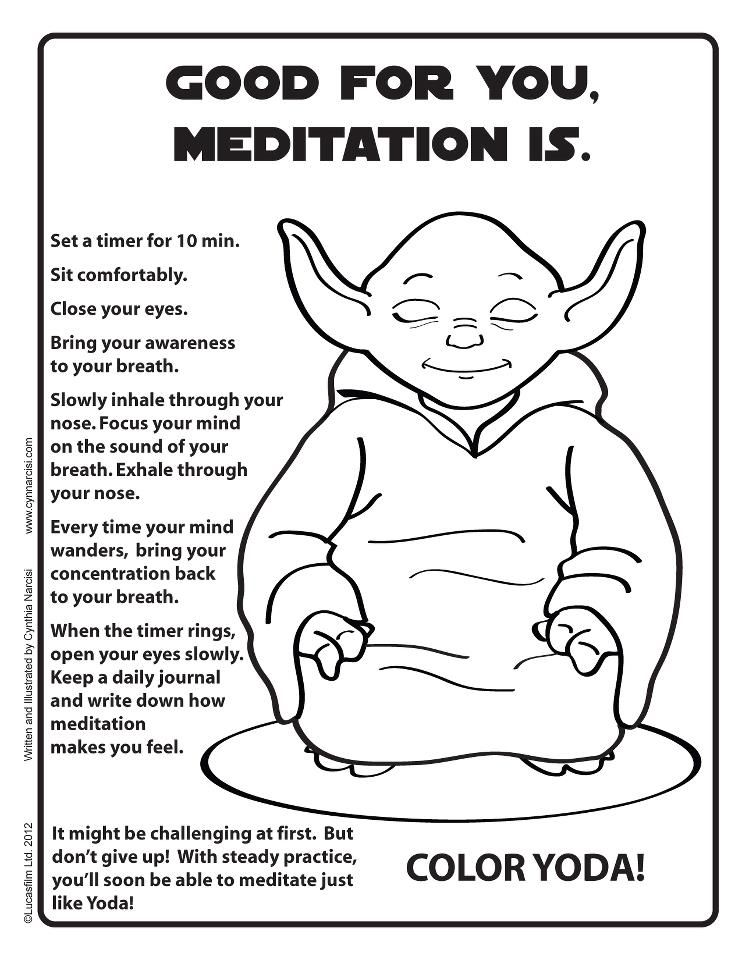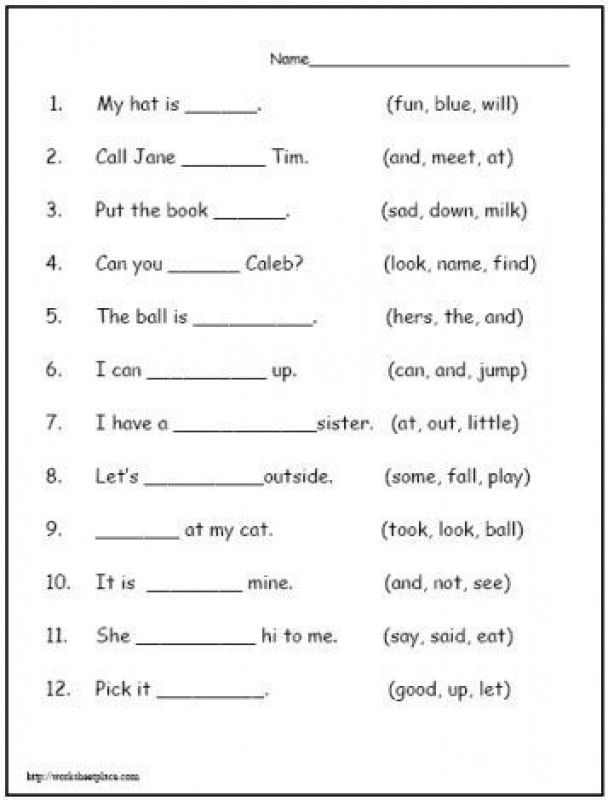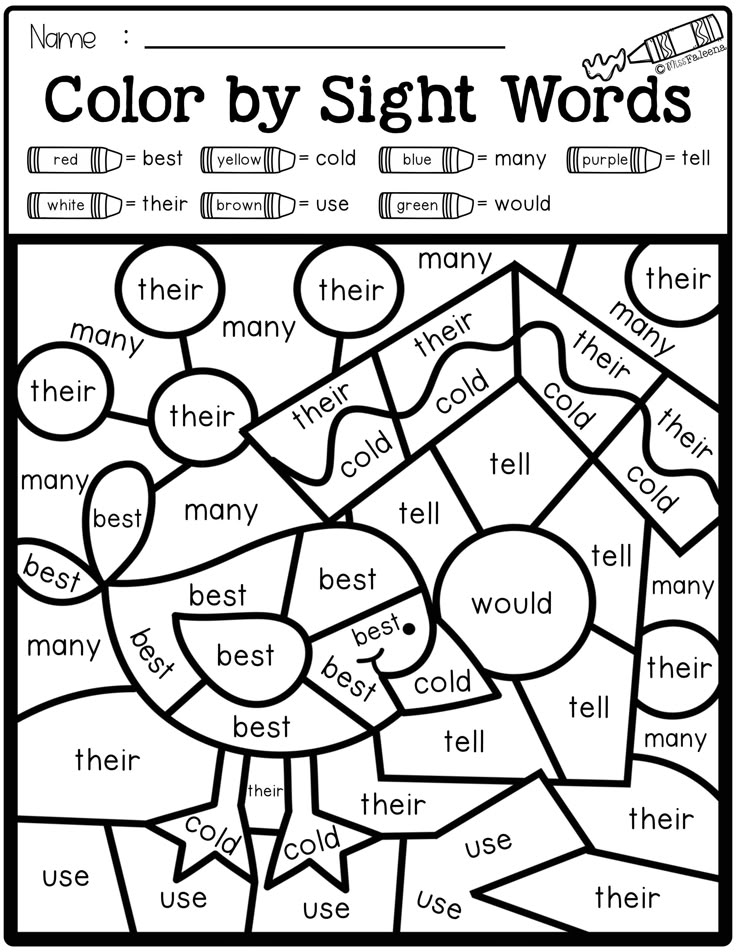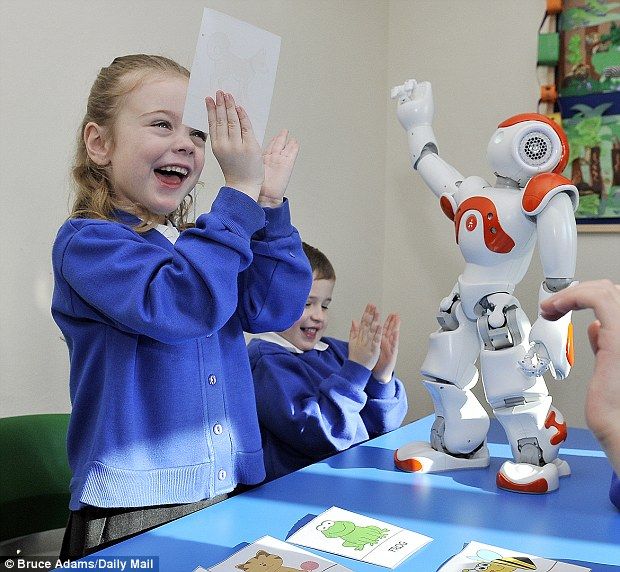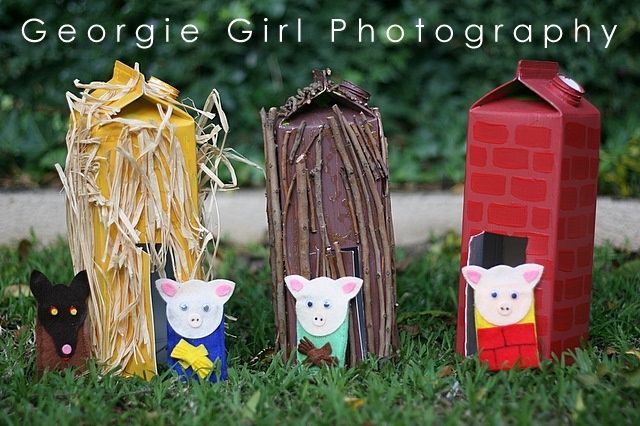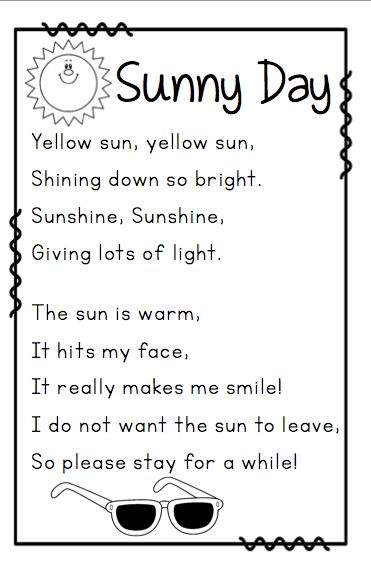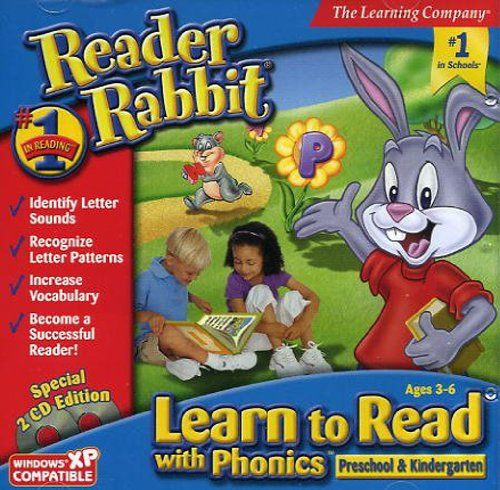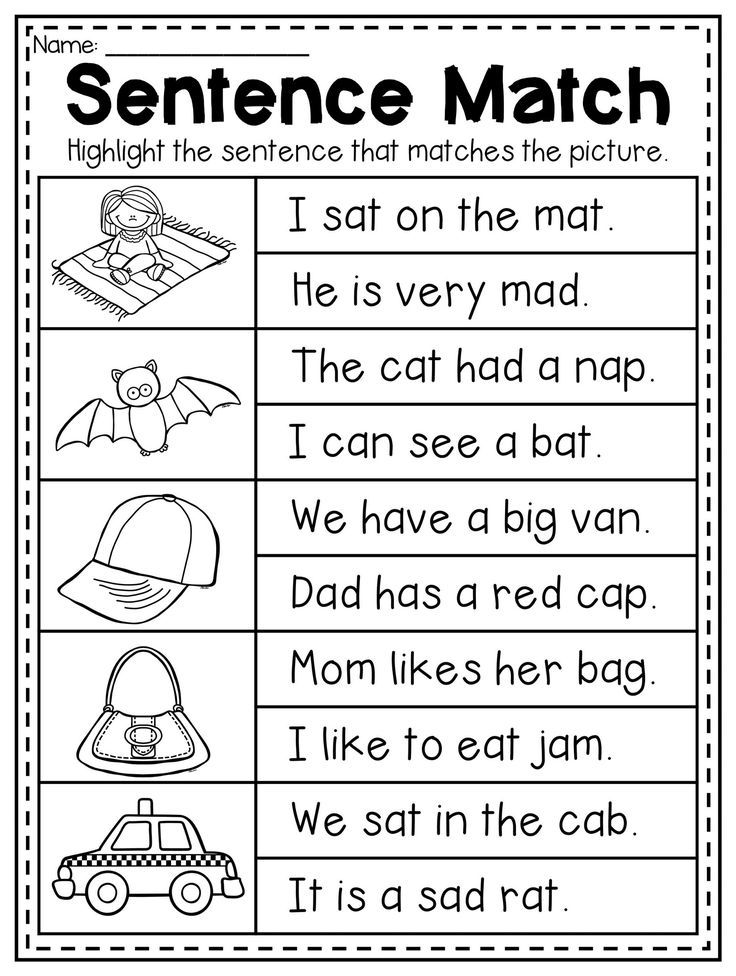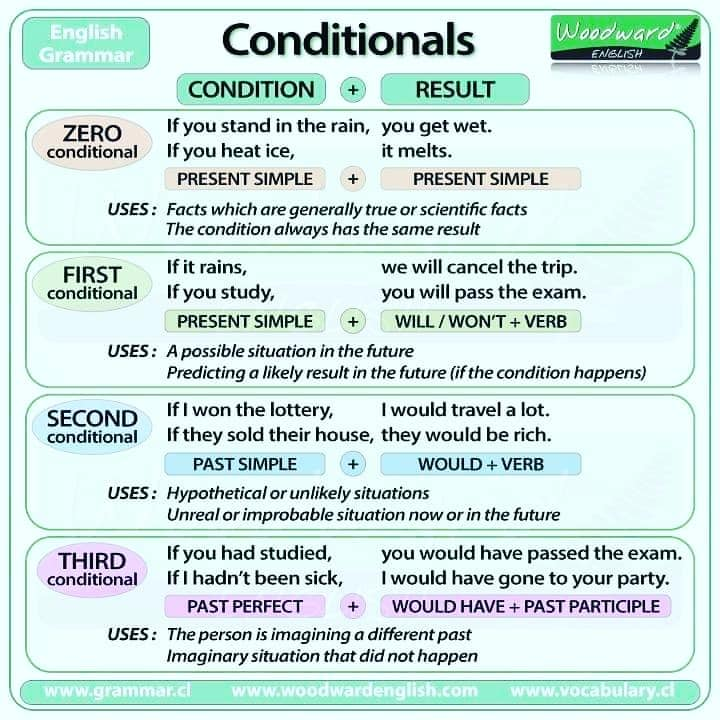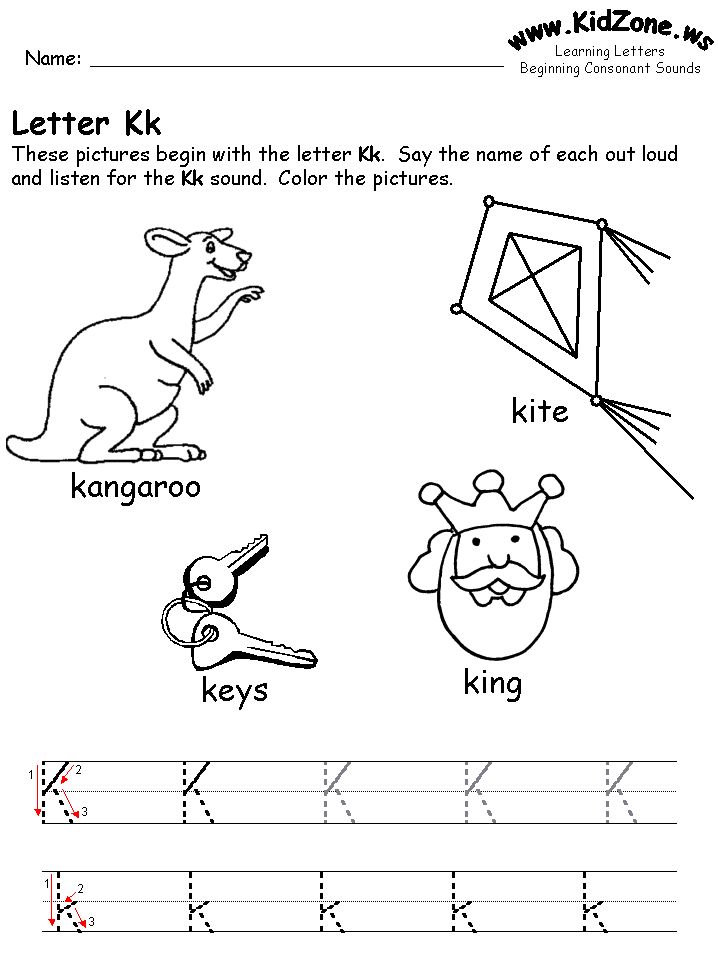How to meditate for kids
3 Meditations for Kids and the Whole Family
Whether you're a parent, teacher, aunt, grandfather, babysitter or otherwise spend time with kids of any age, try out these three practices to introduce kids to meditation and mindfulness.
Meditation, yoga, and other mindfulness practices are more popular, and helpful, than ever. Studies have shown that teaching kids mindfulness practices can build students’ attentiveness, respect for fellow classmates, self control, and empathy, all while reducing stress, hyperactive behavior, ADHD symptoms, and depression.
Yet only 1.6 percent of U.S. children meditate, according to the National Center for Complementary and Integrative Health.
Giving kids the tools to help them fend off negative thoughts and behaviors, build self-confidence, focus, and treat others and themselves with respect and appreciation is a gift they will have for the rest of their lives.
U.S. Rep. Tim Ryan instituted the Skills for Life program in Ohio schools to teach deep breathing, meditation, and other problem-solving skills to elementary-aged kids. What they found was that these practices helped kids balance their emotions, cut down on bullying, and increased awareness, and both students and teachers are excited about the program.
Another study done in the San Francisco Unified School District with more than 3,000 students found dramatic improvement in overall academic performance, including a spike in math test scores for students who practiced mindfulness meditation and “quiet time.” In one rough middle school, where gunfire, fighting, and suspension rates were the highest in San Francisco, when “quiet time” was integrated into curriculum, suspension rates dropped by 45 percent, attendance rose, and grades improved significantly.
Whether you’re a parent, teacher, aunt, grandfather, babysitter or otherwise spend time with kids of any age, try out these three practices to introduce kids to meditation and mindfulness.
1. The Balloon
This guided meditation brings a visual component to a very simple deep breathing exercise. You can do this standing or seated.
You can do this standing or seated.
- Relax your body and begin to take deep inhales and slow exhales through the nose.
- Start to take a slow, deep breath to fill your belly up with air, as if you’re trying to blow up a big balloon. Expand your belly as much as you can.
- Slowly let the air out of the balloon (through the nose) as you release the breath from the belly.
- Encourage your kids to feel their entire body relax each time they exhale, each time air is slowly being released from the balloon. You can even make a “hissing” noise to encourage them to slow down the exhale even more, “Like letting air out of the balloon.”
- Continue for several minutes.
If the child you’re teaching is younger, you can add a little more detail and fun to the exercise to keep them engaged. Young kids, especially under the age of 6, love the extra movement when they’re learning to bring awareness to their breath. Encourage them to stand up in a relaxed way and follow these steps:
- Ask them to think of their favorite color and picture a giant balloon of that color in their mind.
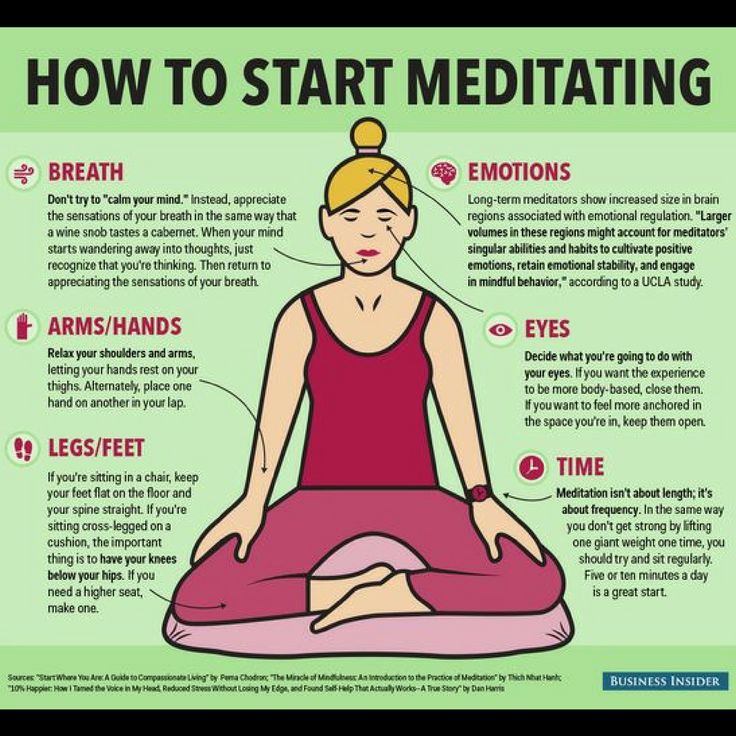
- Then have them take a slow, deep inhale through the nose, filling up their tummies with air as if trying to blow up a giant [their favorite color] balloon. As an option, you can also have them stretch their arms open and overhead to represent expansion and the big balloon.
- When their balloon is totally full, have them hold their breath at the top, and then you can “pop the balloon” for them (gesture finger to belly) and they can fall down as they exhale.
This one will likely elicit giggles and awareness of their breath.
2. Follow the Leader
This meditation works best for kids who are at least 5 years old. Ask your child to picture their best friend or a sibling—someone they do everything with or someone they look up to. Then ask them which one (your child or their best friend) usually leads. Usually one friend is the one who decides things—the one who is more of the leader; the other one is the friend who usually follows the leader. Ask them which they are.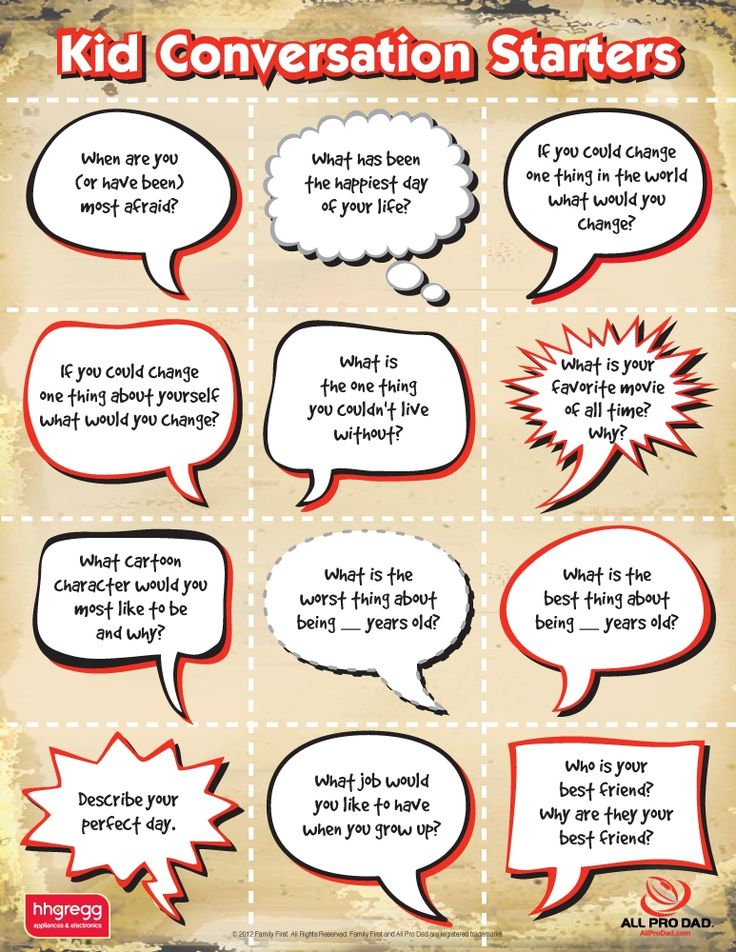
If they are the leader, you can tell them to picture themselves as the breath. If they are the follower, you can ask them to picture themselves as the mind. For this example, I’ll pretend that they’ve chosen their big brother as their best bud, and the big brother is the leader.
Say something like, “So you and your big brother do everything together. Let’s pretend that your breath and your mind are best friends, too. And that you are just like the mind—the follower, and your big brother is just like the breath—the leader.” Then follow the steps below to guide them through the meditation.
- Sit down comfortably and close your eyes.
- Bring all of your attention to your breath and slow it down, taking deep inhales and slow exhales.
- Let’s have the mind follow the breath—no matter what. Picture yourself as your mind, the one that’s following your big brother, your breath. Try to focus your mind on the breath and follow as the breath inhales and exhales.
- Count your breaths at the end of every exhale.
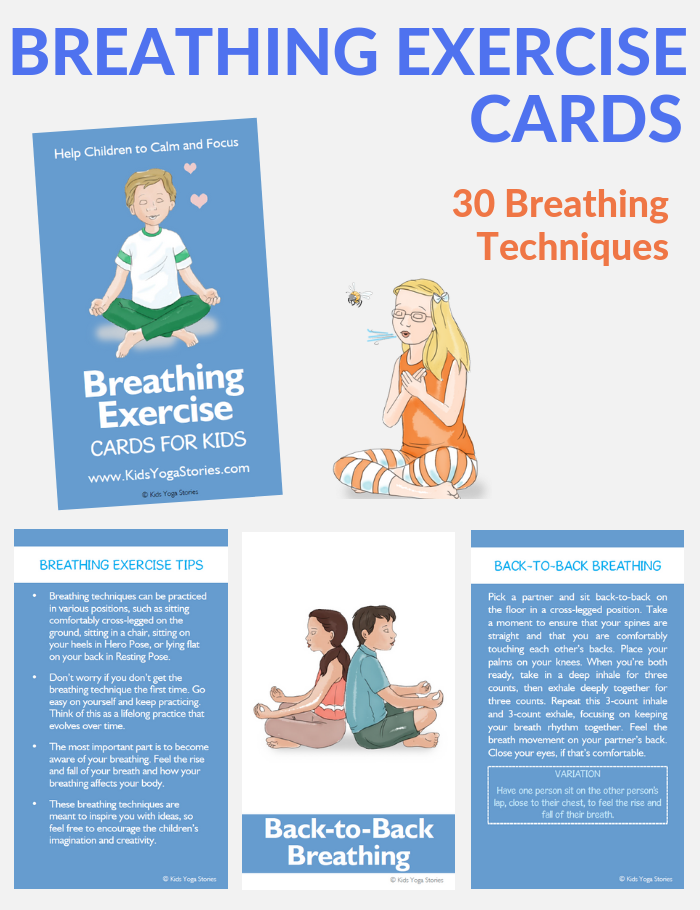 Don’t let your mind count before the end of the exhale. The mind always wants to jump ahead, but don’t let it. Allow it to remain focused on being the follower.
Don’t let your mind count before the end of the exhale. The mind always wants to jump ahead, but don’t let it. Allow it to remain focused on being the follower. - Count to 10 slowly, always at the end of each exhale, continuing to let the mind follow the breath.
3. Guided Relaxation
This practice is great for kids (and adults) of all ages, whether they’re having trouble sleeping, stressed out, sick and in bed, or acting out. It’s based on the progressive muscle relaxation technique that Dr. Edmund Jacobson developed in the 1920’s. It’s used to help alleviate tension when people are in a situation that makes it difficult for them to relax. Guide your kids with these steps:
- Sit down or lie down comfortably and close your eyes. You can use pillows or blankets to make yourself as comfortable as you can be.
- Take a few deep, cleansing breaths as you begin to relax.
- Bring all of your attention to your right foot, noticing how it feels. Squeeze the right foot, making a fist with your entire right foot and all five toes; tense and squeeze it tightly.
 Hold this tension for two deep breaths.
Hold this tension for two deep breaths. - Then release all tension in the right foot suddenly. Relax it completely and notice the tension release. You may feel a tingling sensation in the foot.
- Take a deep breath, and then move on…
- Move your attention to your left foot. Same instructions as for the right foot.
- Move slowly up and around the body, squeezing one body part at a time to create tension, immediately followed by the contrasting sensation of release and ease. Follow each part with a deep, cleansing breath. Here’s a sample progression you can follow:
- Right foot, left foot
- Right ankle and calf, left ankle and calf
- Right knee, left knee
- Right thigh, left thigh
- All feet and legs
- Hips
- Butt
- Belly
- Entire lower body, from tummy down
- Chest and heart
- Right arm, left arm
- Right hand, left hand
- Shoulders
- Neck
- Face
- Whole body at once (do this one twice)
When you’re finished guiding your child through the relaxation technique, make sure they spend at least a few minutes in quiet, encouraging them to keep their breathing slow and steady.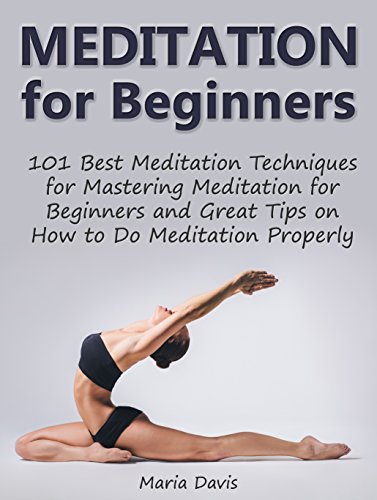
Download the Chopra Meditation & Well-Being App now for more powerful tools that will help your children find peace and calm in any situation—a skill that will benefit them into adulthood.
The Basics of Meditation for Kids of Any Age
Share on PinterestWe include products we think are useful for our readers. If you buy through links on this page, we may earn a small commission. Here’s our process.
Teaching kids to look after their minds is just as important as teaching them how to care for their bodies.
Introducing children to meditation early on — along with establishing healthy sleep routines and limiting screen time — can help them learn how to calm their minds and use healthy coping mechanisms for the rest of their lives.
But sometimes, getting a toddler, preschooler, or even an older child to sit in quiet stillness is not as easy as it looks. That’s why you need to keep meditation on their level.
Here, we explore the basics of meditation, benefits, and tips on how to give children of all ages the tools they need to practice.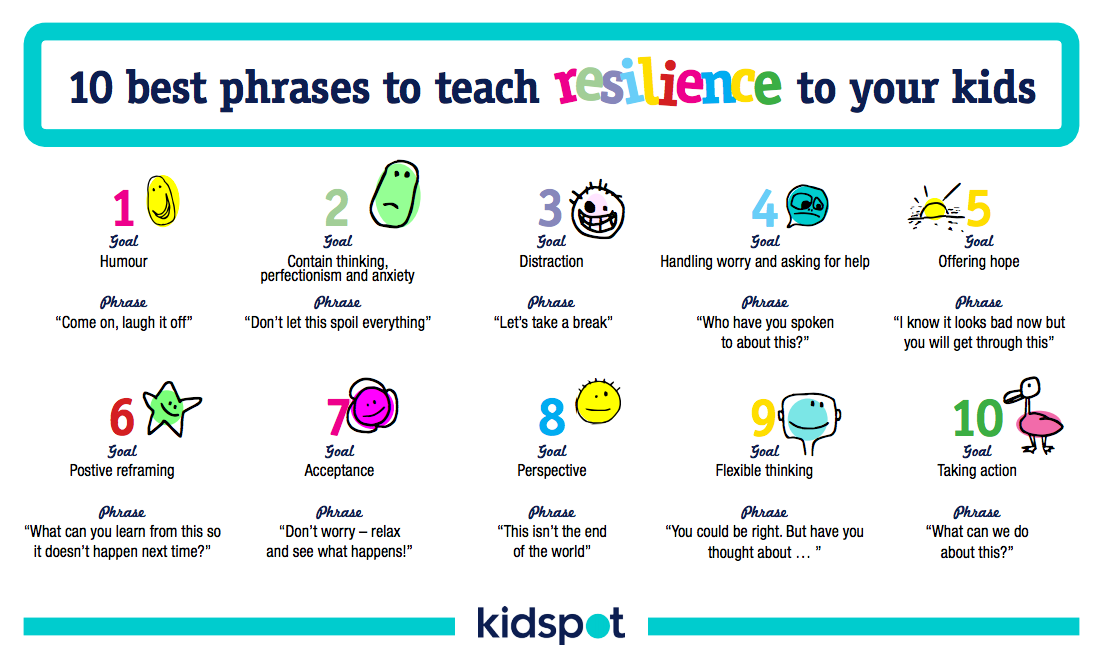
Meditation is a mind-body practice that can initiate moments of calm, bring about self-awareness, and allows people to stay connected with themselves, according to Sarah Roffe, LCSW, CCLS, a co-founder and psychotherapist at Kind Minds Therapy.
When practicing meditation, the National Center for Complementary and Integrative Health says the focus is on the interaction between the brain, mind, body, and behavior, with the goal of moving into a peaceful and energized state of mind.
There are several types of meditation, but most share four key characteristics:
- quiet location
- comfortable body position such as sitting, lying down, or walking
- focus of attention
- open attitude
While many of the practices are the same, meditation looks very different for kids and adults. First, says Roffe, their duration differs. “Adults have more patience, ability for self-reflection, and can stay focused for longer periods of time,” she explains.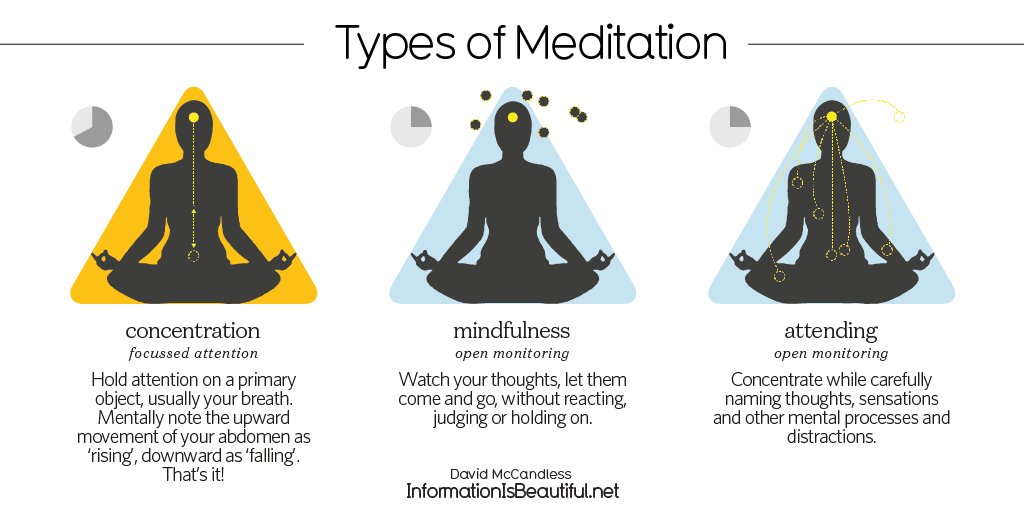 With kids, you need to start with smaller chunks of time and add as their ability to meditate changes and grows.
With kids, you need to start with smaller chunks of time and add as their ability to meditate changes and grows.
Laura Vogel, PhD, a licensed psychologist and director of therapeutic services at Momentous Institute, says meditation does look different for children, particularly young children. “Initially, children won’t understand why they are meditating; therefore, we need to introduce the practice in a fun, engaging way, which may involve toys, stories, or movement,” she says.
Moreover, parents need to encourage kids to find the type of meditation that works for them. Like adults, Roffe says kids need to find a practice they feel connected to and will continue to practice in their everyday lives.
While one obvious benefit of meditation for children is a calmer, quieter environment for parents, the pros of this peaceful time extend far beyond what you observe at the moment.
“Teaching children how to meditate early on can help them manage unwanted emotions in a socially acceptable and therapeutic manner,” says Leela R.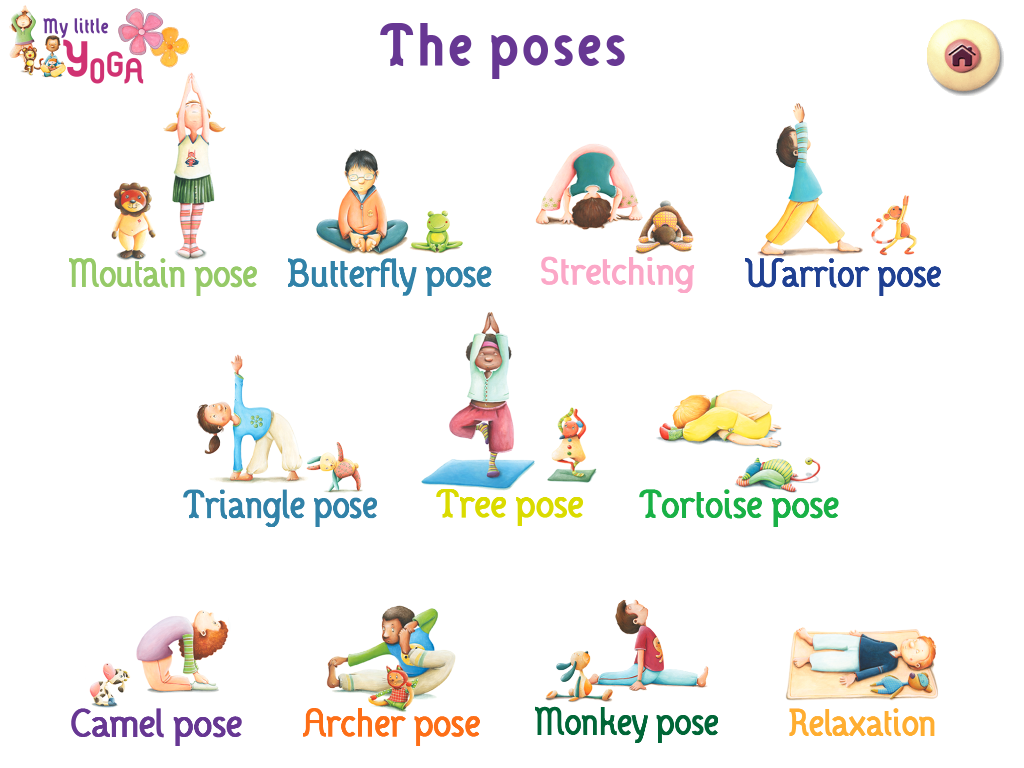 Magavi, MD, a psychiatrist and regional medical director for Community Psychiatry.
Magavi, MD, a psychiatrist and regional medical director for Community Psychiatry.
The coping skills they learn from practicing meditation can last a lifetime. More specifically, a consistent practice of meditation can help children with the following:
- sleep
- attention
- self-regulation
- focus
- retention of information
- creativity
- mood
- managing stress
- overall well-being
Currently, sleep is one of the top reasons to teach children how to meditate. “Many of the children I evaluate are struggling with sleep due to disrupted schedules this year, and meditation has decreased sleep latency, improved sleep maintenance, and enhanced sleep quality,” says Magavi.
It may also decrease familial stress and improve relationships, which is why Magavi advises parents to meditate with their kids daily.
How you introduce and practice meditation with your child will determine their level of interest.
If you practice with kids when they are calm, Vogel says they are much more equipped to access this skill when overwhelmed.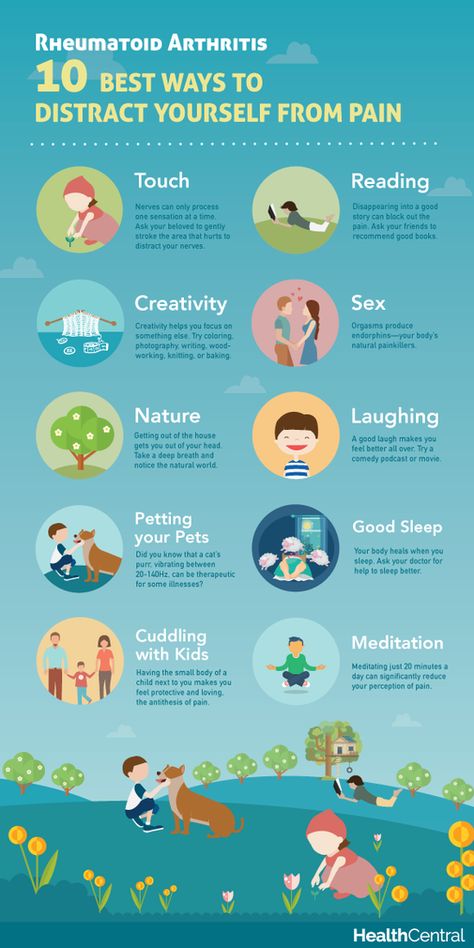 “Children need an external structure provided by adults for this to truly be integrated into their lives,” says Vogel.
“Children need an external structure provided by adults for this to truly be integrated into their lives,” says Vogel.
She suggests making meditation part of a bedtime or morning routine, when kids and parents are less likely to have competing responsibilities. “Children as young as 3 or 4 years of age can learn breathing techniques that allow them to feel a change in their bodies,” says Vogel.
When it comes to teens, Roffe says it’s great if you can join them, but it’s also okay to give them space to practice 5 minutes of meditation in the morning and night.
“Rather than joining them, you can help them create a quiet space for themselves that provides a safe environment for self-connection and allows them an opportunity to be grounded, and focus on having the negative thoughts from the day escape their minds,” she says.
Incorporating a meditation practice at home can start with toddlers. Since toddlers and preschool-age children benefit from mimicking their caretakers, Roffe suggests making meditation a family norm.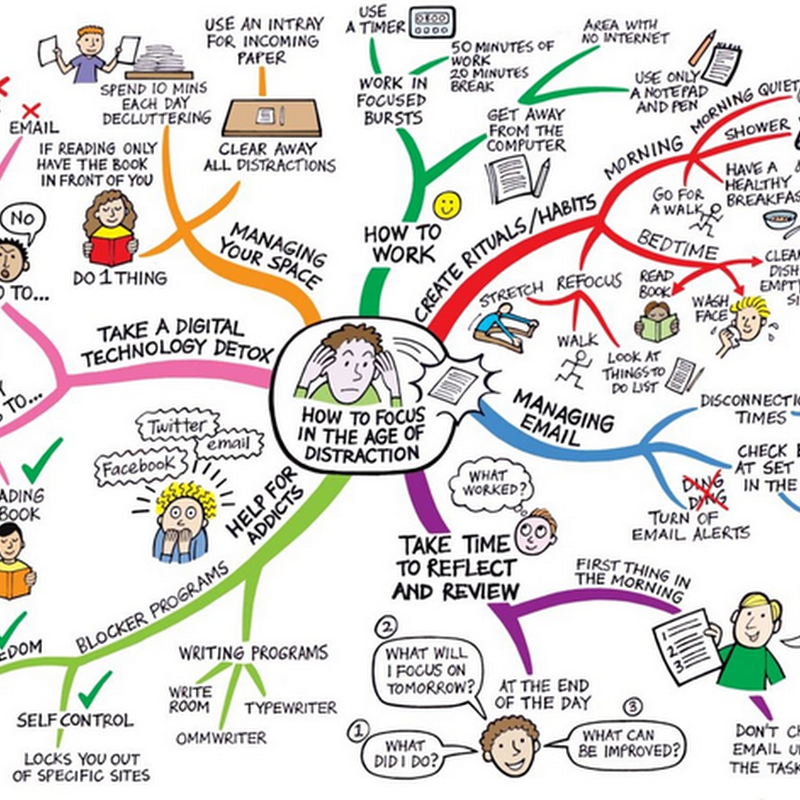
“The more it is part of your routine, the easier it will be to implement and normalize it as a part of your child’s routine,” she says.
Taking deep breaths is a great way to start meditating with young kids. With that in mind, here are a few tips from Roffe to introduce meditative breathing:
- Have them sit in a comfortable position. You can try a yoga pose like baby cobra or have them sit cross-legged.
- Teach them about connecting with their bodies. For example, tell them to watch their belly move up and down as they take a deep breath in and out.
- Reinforce the why. Take these moments to emphasize the benefits we feel when practicing meditation.
“It’s important through all of this to remember that kids can meditate and still be kids,” says Roffe. Her advice? Make it fun. “Sure, they may wiggle around or laugh the first few times, but this is when practice and patience are key.”
Magavi teaches this breathing technique to toddlers and preschool-age kids.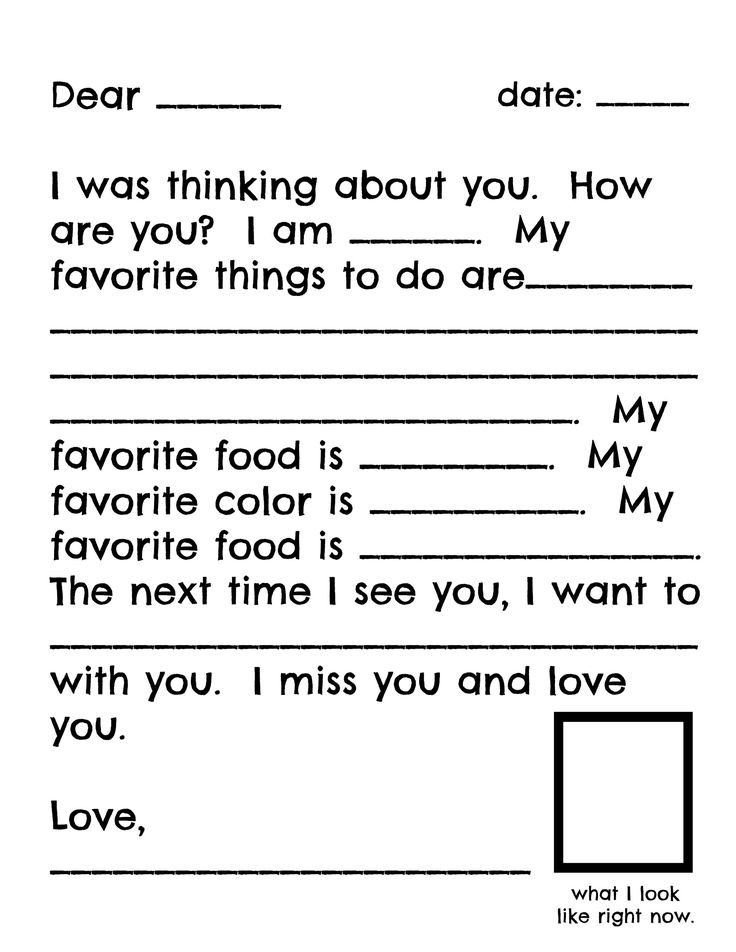
- Picture a big balloon that you want to inflate.
- Breathe in slowly and deeply to ensure the balloon will be big.
- Breathe out very slowly, so the balloon does not pop.
- When you are upset, make your balloon.
Check it out
Headspace has an excellent app for kids to learn the basics of meditation. And the best part? The app has customized the sessions for three age groups: 5 and under, 6–8, and 9–12.
For school-age children, Vogel says guided imagery is easy to incorporate into a bedtime routine. She likes to use an app called InsightTimer with families as an example of free recorded scripts. Vogel also encourages school-age children and teens to do something unique with their hands when they practice.
“Typically, this is something like holding their thumb and ring finger together. Over time, this position (or tactile cue) then becomes associated with a relaxed, focused mind,” she explains.
When a child starts to feel overwhelmed, Vogel says, placing the fingers in this position is a cue to the brain to begin slowing and calming down.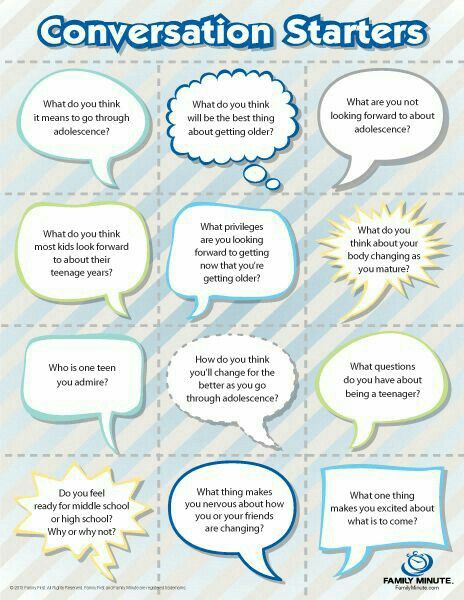
Also, teaching breathing techniques to this age group can help them with a strong foundation for meditation. Kids can practice meditation for at least 5 minutes at the beginning and end of the day, and breathing exercises are an excellent introduction to a deeper practice. Momentus Institute has several videos that teach breathing strategies to younger children.
The key to meditation is to train the mind to ignore the “noise” from our stressful world and focus on our bodies. For teens, Vogel’s go-to guided meditation asks them to take a safe-place journey that uses all of their senses. Here, she goes over the steps of that journey:
- Identify a safe place.
- Notice what you see. What textures, colors, and objects are in the space?
- Notice what you feel, for example, is there a soft pillow or cold sand?
- Notice the smell. Is it sweet, savory, or familiar?
While performing the steps above, Vogel says teens can give themselves permission to acknowledge their “to-do” list when it shows up, because it will show up.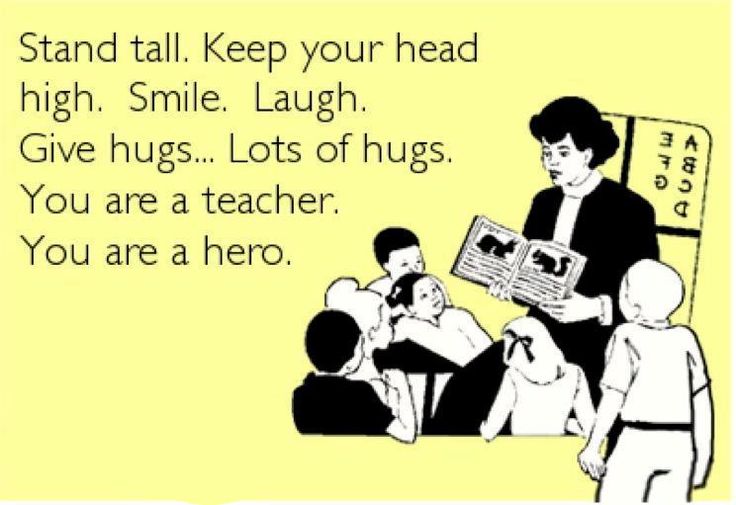 “We need to greet it, acknowledge it, and then allow it to move out of the safe space with our breath,” says Vogel.
“We need to greet it, acknowledge it, and then allow it to move out of the safe space with our breath,” says Vogel.
Roffe says it’s important to explore various mindfulness meditations that may benefit your teen. For example, if your teen is into art, try a focused meditation like coloring mandalas, or if they are into sports, try yoga with them. Whatever the practice, Roffe says to try and join them.
Preschool-age children up to teens can learn how to meditate. By giving them the tools they need to practice, and joining them while they do it, kids can initiate moments of calm, bring about self-awareness, and begin to connect their mind and body.
How to Meditate: Techniques for Children and Adults
photo: Victor Carcia
Irina Pischikova, marketing specialist, coordinator of the International Ripa Awareness Meditation Program in Russia and mother of a 5-year-old son, gave us two meditation techniques, as well as a list of books on meditation and told us where to study in a group.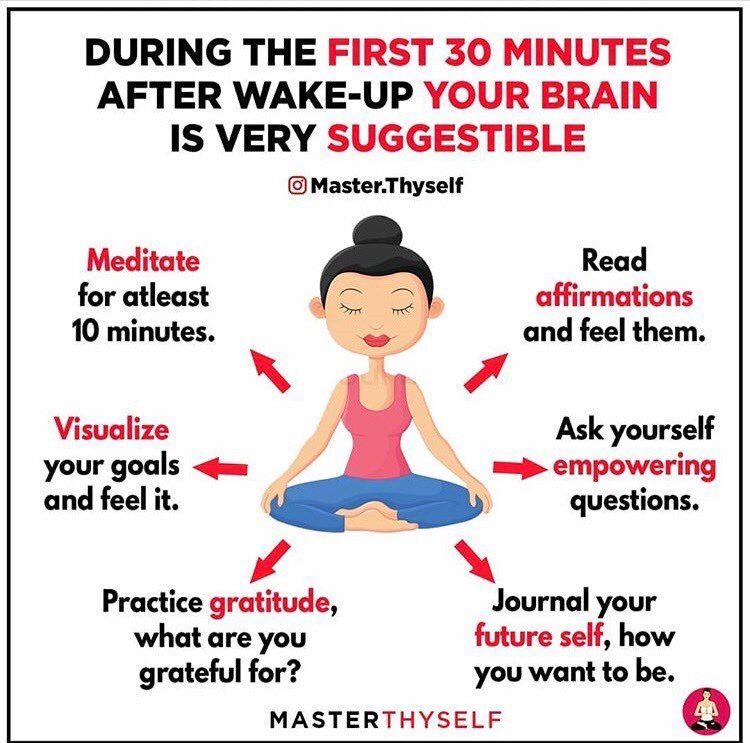
Children of all ages can meditate. In this way, they gain access to their inner strength and to those processes that will help them solve their problems. As a rule, meditation techniques for children are divided by age: from 5 to 7 years old, from 8 to 10 years old and from 11 to 16 years old.
With kids from 5 years old, it is best to do “creative meditation”, which is not like meditation in the classical sense. For example, paint with sand or assemble a mosaic. For children from 8 years old, short sessions are suitable - no more than 5-7 minutes - with switching attention to various objects.
For older groups, the meditation session can gradually become longer.
I don't teach meditation classes for children, but I thought I'd share with you how I meditate with a child at home.
First of all, the child should see someone's example. Therefore, the most correct thing is when a child sees a meditating adult. If you are planning to start meditating with your child at home, start simple with mindful breathing.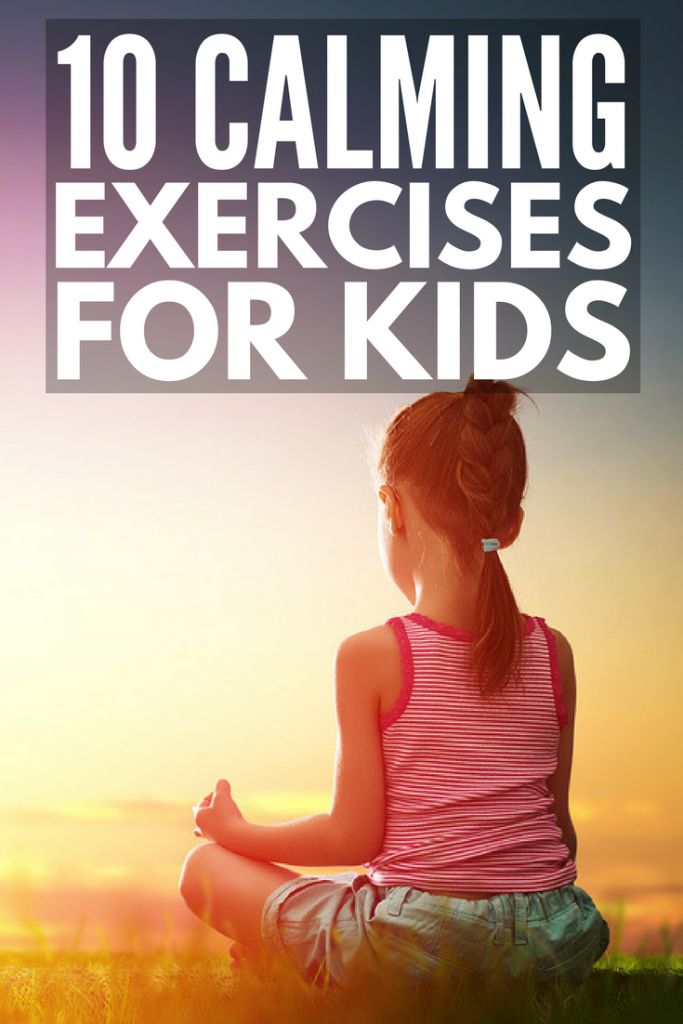 It will be useful for both you and him.
It will be useful for both you and him.
Mindful breathing technique for practicing with children
1/. Sit next to your child on a cushion, cross your legs, or take a comfortable position in a chair.
2/. If you are sitting in a chair, make sure your feet are firmly planted on the floor.
3/. Close your eyes. Relax.
4/. Focus on your own breathing. Breathe softly and naturally.
5/. Put your child's hand on his stomach and ask him to slowly exhale and inhale.
6/. Feel your stomach rise and fall under your arm as you exhale and inhale.
7/. Exhale and feel your belly getting smaller.
8/. Take a breath and feel your belly getting bigger, inflating like a balloon.
9/. Sit quietly and breathe in a relaxed manner, feeling your belly shrink with each exhalation and expand with each inhalation.
10/. Sit and breathe like this for 2-5 minutes. Perhaps after a few sessions, the child will want to extend the time of meditation - let him do it.
11/. Then open your eyes and stretch a little.
12/. Gently stretch your fingers and toes.
13/. Sit still for a while.
14/. Look around you and listen to the sounds of the world around you.
Where to meditate in a group
At the Ripa Center, founded by Buddhist master and author of the Ripa Awareness Meditation Jigme Rinpoche (I talked about him in the previous column) from Tuesday to Saturday there are regular one-hour meditation classes for adults. In the future, it is planned to organize meditation classes especially for children of different ages.
Later, the mindfulness meditation technique will be integrated into schools and various educational institutions in Russia. For example, already now, together with the Institute of Practical Psychology of the Higher School of Economics, we are thinking about launching a joint 5-month course in mindfulness meditation, upon completion of which a certificate will be issued. Foreign experience of educational institutions in Canada, the USA, and India shows that meditation has a positive effect on students, improving their emotional state and learning comprehensibility.
Foreign experience of educational institutions in Canada, the USA, and India shows that meditation has a positive effect on students, improving their emotional state and learning comprehensibility.
While children should certainly be encouraged to meditate, their participation should still be voluntary.
What to read about meditation
If you want to delve into the topic of meditation specifically for children, then I recommend reading books by authoritative authors:
1/. The book “Seeds of Mindfulness. Mindfulness Practices for Children" by Thich Nhat Hanh
2/. Rinpoche Yongey Mingyur, Hayden Tory “Tashi. The Puppy Who Learned to Meditate”
3/. Ciel Claridge "Little Buddhas...and also their parents!"
Before you start teaching meditation to a child, you need to start with yourself - with an adult :)
Next, I offer a meditation technique for adults. Of course, it will be useful not only to mothers and those who plan to become her in the near future.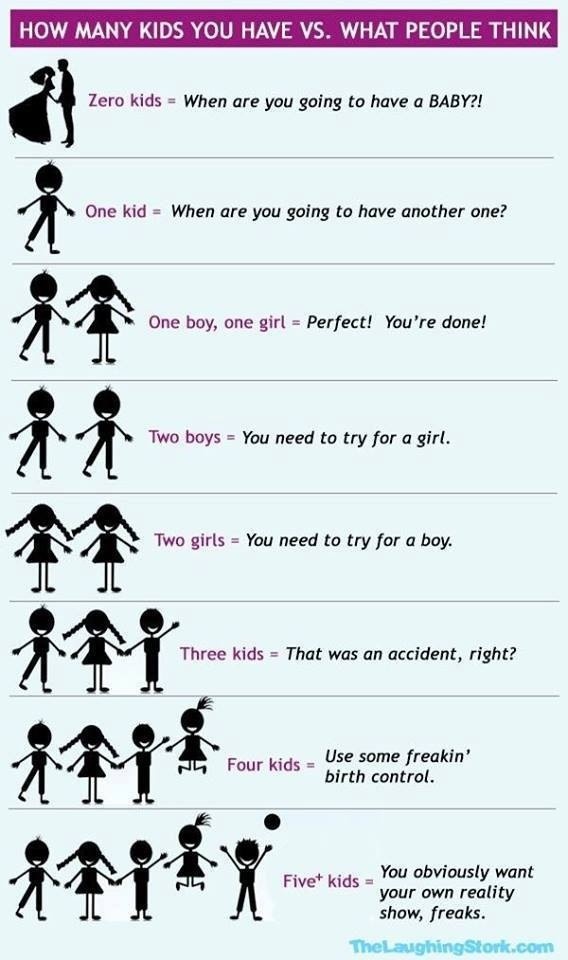 This technique is suitable for adults regardless of age, marital status and experience in meditation or other practices.
This technique is suitable for adults regardless of age, marital status and experience in meditation or other practices.
You can just stop, sit down and become aware of the breath at any moment in your life, anywhere. Just sit for 5 minutes and just breathe.
There are many meditations: on sound, with voice, with visualizations. But essentially they are all based on mindfulness meditation. The technique of conscious breathing is the simplest, most accessible. For breath is something that is always present with you. So you can just stop, sit down and become aware of the breath at any moment in your life, anywhere. Just sit for 5 minutes and just breathe.
I recommend everyone to start with the Shamatha technique. This meditation practice was handed down to us during the time of the historical Buddha and has survived to this day, retaining its authenticity, and therefore depth. (Shamatha is a type of meditation in Buddhism, its goal is to achieve mental peace, as well as the very state of clarity of consciousness - ed. ).
).
Shamatha meditation technique for adults
1/. We sit on the pillow with crossed legs. If this is not possible, then sit on a chair. It is important to keep your back straight and not lean on anything. Feet (if you are sitting on a chair) should be in close contact with the floor surface, always remain in one place to avoid constant fidgeting.
2/. We straighten the back.
3/. The shoulders are relaxed, slightly lowered, the chest is fully open.
4/. The head is straight, the chin is slightly pressed to itself, but not lowered. So that the gaze is not directed to the sky, and the head does not throw back.
5/. We direct our gaze along the line of the nose into the space in front of us. The eyes are relaxed, unfocused and half open. If you are more comfortable with your eyes closed, you can cover them.
6/. The tip of the tongue gently touches the upper palate, this allows you to relax the jaws and muscles of the face, the mouth is covered.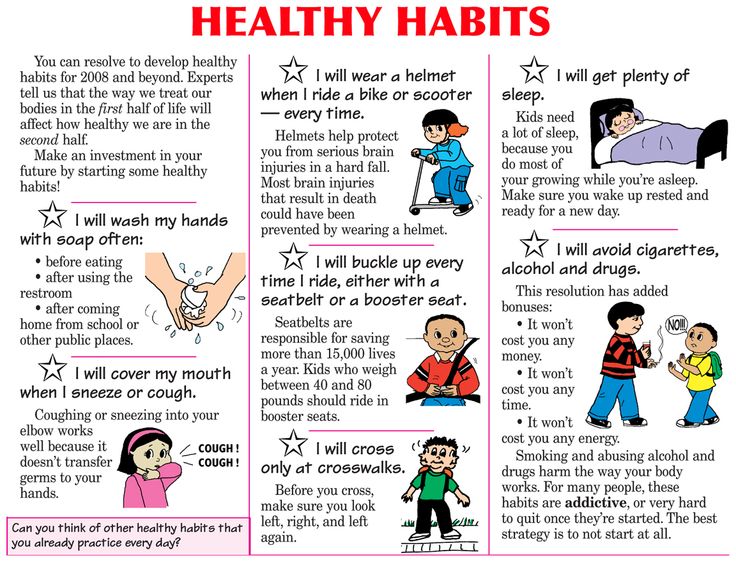
7/. Place your hands relaxed on your knees, palms down.
8/. Now, while in this position, you can breathe normally, freely, without trying to breathe in any special way. We just sit and breathe.
9/. We begin to observe our own breathing.
10/. We exhale slowly and then inhale. We start with the exhalation, as this is the Shamatha technique, which means “Remaining at rest” in translation.
11/. 2-3 minutes relaxed and natural breathing.
12/. We can also put our hand on the stomach and feel how the walls of the stomach fall with the exhalation, and with the breath the stomach fills with air.
13/. Then you can open your eyes, stretch, rest for 2-3 minutes and continue.
14/. We again take a comfortable position, straighten our back and continue to observe our breathing.
15/. We track with attention each exhalation and inhalation as one cycle and count the cycles of breathing to ourselves, starting from one.
Exhale and inhale -1, exhale and inhale again -2, and so we reach 7 breaths and again return to 1. Counting is an additional tool of vigilance. It helps direct the mind into the present moment of awareness of one's own exhalation and inhalation.
So we breathe and become aware of the cycles of our own breathing and count them from 1 to 7, then return to 1 again (several approaches).
Each time our attention is distracted from the breath by sensations in the body or thoughts that arise, we note to ourselves that we have been distracted, and again return attention to the breath, starting the count again from 1.
In this way we breathe for 5-10 minutes.
Then we open our eyes. We can sit in a relaxed state for a while, after which we can do our usual things.
A Parent's Guide to Helping Their Children
Today's youth experience anxiety and stress. Much more than it should. According to recent statistics published by the American Academy of Pediatrics,
Up to 30 percent of children and young adults will experience an anxiety disorder in their lifetime.
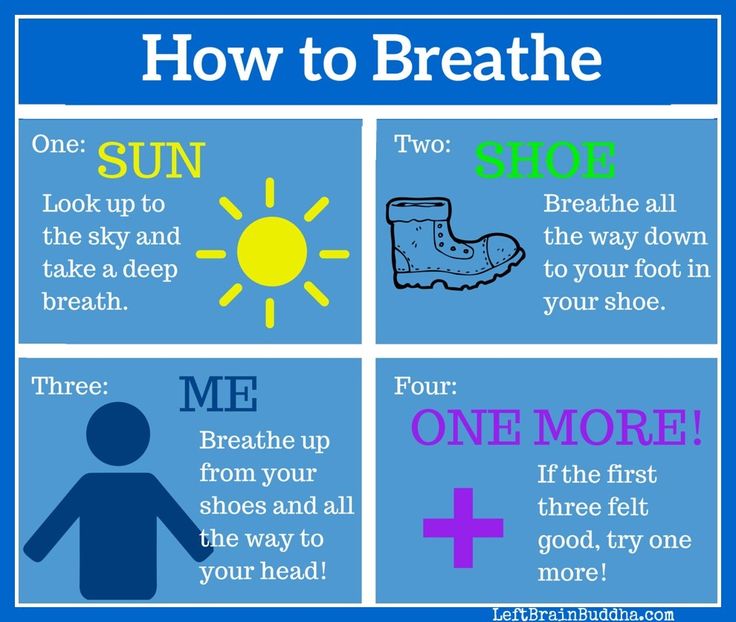
Parents and other caregivers should teach our children good stress-reducing habits and introduce them to mindfulness activities that help them grow, support mental health, develop self-control and self-esteem, and reduce anxiety.
One of the best ways to do this is through meditation. We cover everything you need to know about meditation for kids, including what the practice looks like, how to teach it, and why it works. While teaching mindfulness to children may seem like a daunting task for parents or teachers who want to improve their children's well-being, once you understand what mindfulness and meditation practice is, everything becomes much easier.
Overview: Meditation for Kids
In some ways it is not surprising that children develop stress disorders early. We live in a sensory world. There are real threats, and the unknown can be scary. Today's children suffer from attention spans and an inability to concentrate while studying, in the classroom, or even at play.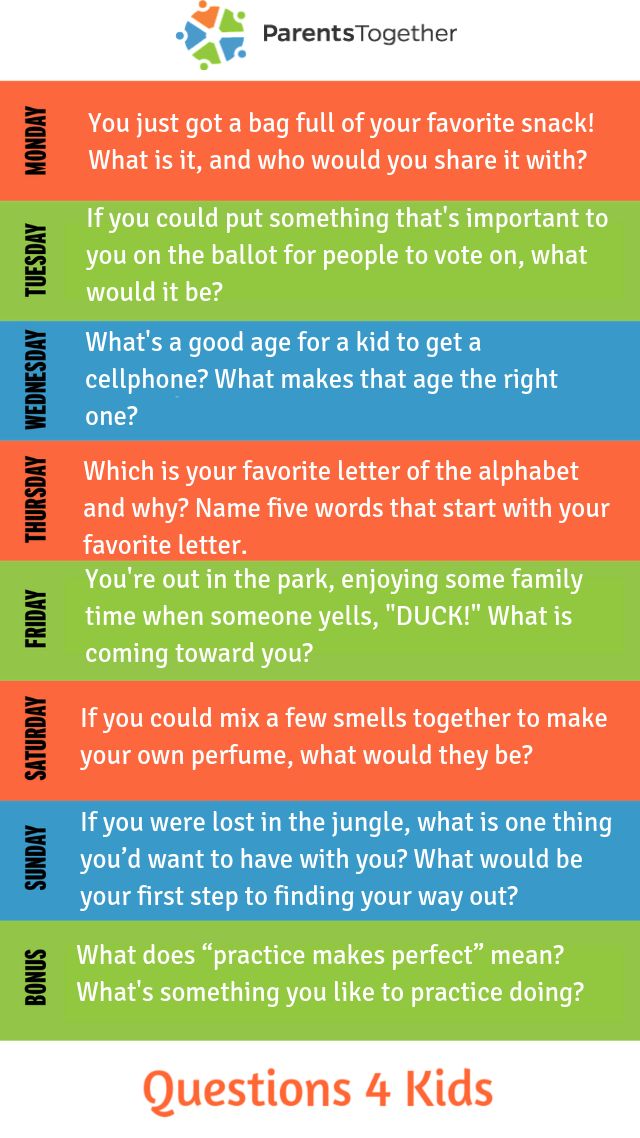
It is tempting to think that you can protect your children from all fears and stresses throughout their lives; the best answer is to explain how to deal with difficult times. Children's meditation can help them with this.
Establishing a solid meditation practice at an early age is a good intention for your children and for yourself as parents and educators.
Whether it's deep breathing exercises, guided meditations, sleep stories, yoga, or any other mindfulness-based intervention, there's no doubt that children of all ages will benefit from mindfulness training from an early age.
Diagnosis of anxiety and behavioral disorders in children has increased dramatically.
Now let's define what meditation is?
For both children and adults, meditation is a practice that can bring great joy and comfort to your life. Although it can be difficult to define meditation in one sentence, in general it can be said that meditation is a mind-body practice that trains mindfulness and concentration.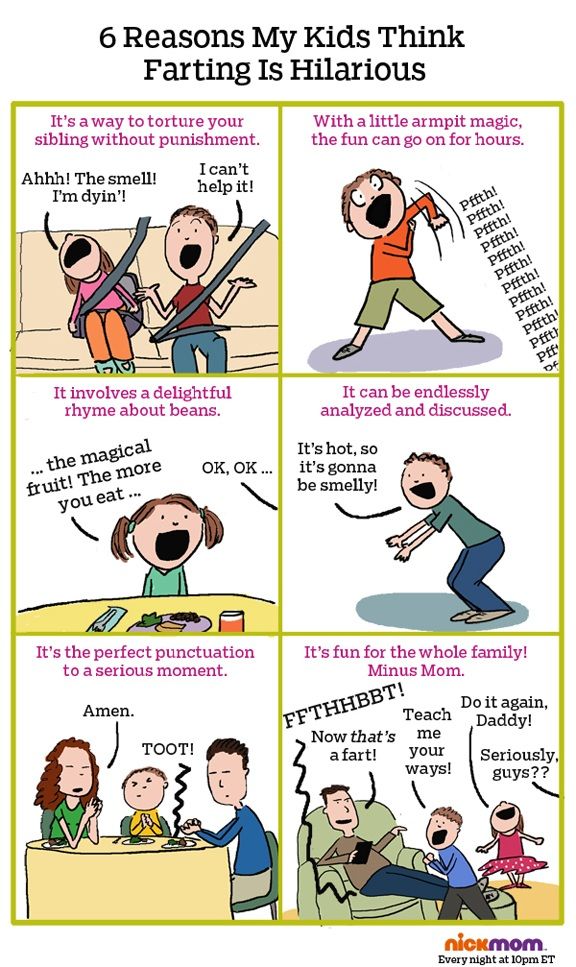
There are many benefits of meditation. For example, it helps improve concentration, soothe frayed nerves, relieve stress, promote self-complacency, and promote happiness. All these benefits are available to both children and adults.
Can children meditate?
Yes! Although a child's meditation will not look the same as an adult's meditation, the basic foundations of the practice remain. Children, for example, may benefit from guided imagery. Their duration may be shorter. And, of course, it is very important to choose meditation for the child. Some, for example, do not tolerate sitting meditation for more than a few minutes very well. However, they are fine with meditating while walking outdoors, mental painting, telling sleep stories in a soothing voice, or even listening to audio recordings as guided meditations.
Mantra meditation can spark curiosity in older children as it requires
extra attention and patience, but can be a great option if your kids are willing to dive deeper into
Why is meditation important for children?
Up to 30% of young people develop anxiety disorders.
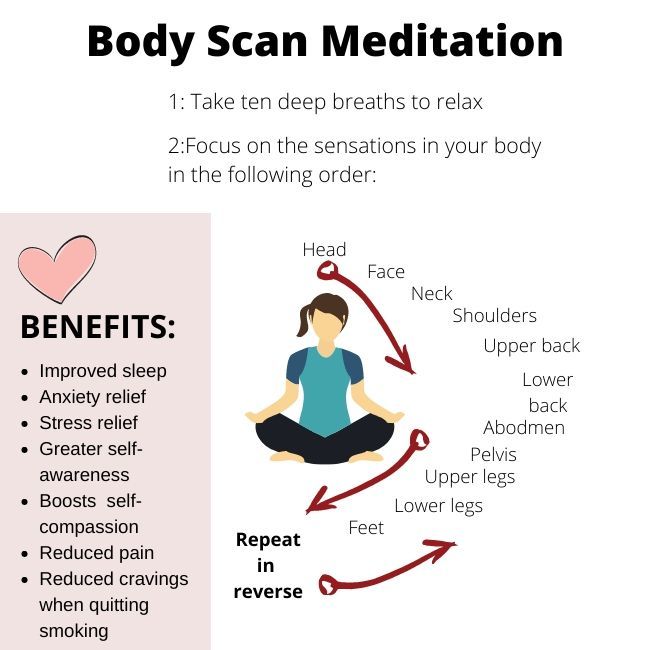
- American Academy of Pediatrics
Children are not immune from the stresses of life. In recent years, the number of diagnosed anxiety and behavioral disorders in children has increased dramatically. These include attention deficit disorder (ADD), attention deficit/hyperactivity disorder (ADHD), and obsessive-compulsive disorder. First, it tells us a few things as our understanding of how conduct disorders manifest in children grows. Second, rates of diagnosis are rising as children are tested and diagnosed with these disorders. In other words, today's children are not necessarily more stressed than children of the past. However, it also tells us that children are more prone to anxiety and stress than we previously thought. As parents, we must be vigilant and help our children cope with stressful situations in life and instill self-care in their lives from an early age.
Can meditation help children cope with stress?
Yes.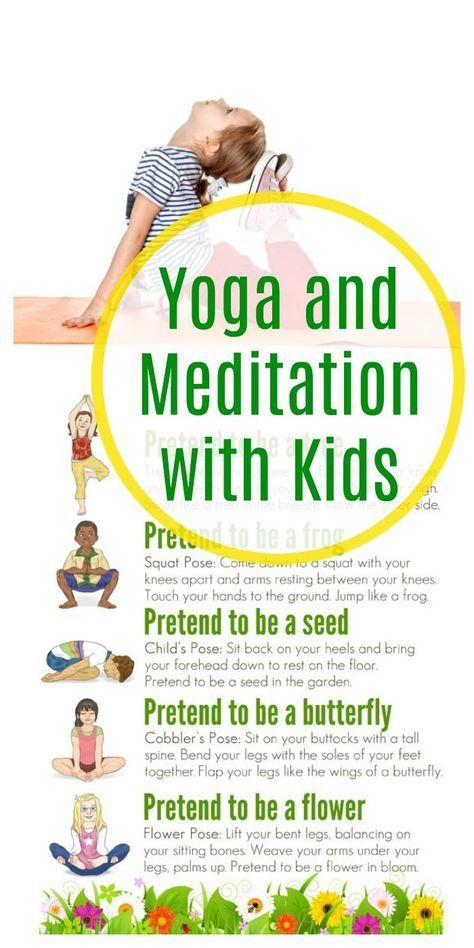 Fortunately, meditation can help calm the symptoms associated with problematic disorders. Children's meditations have the same effects as adults' practice. Even short, simple meditations for beginners can have amazing benefits. A recent study in the Journal of Positive Psychology found that just 15 minutes of meditation has the same positive impact as a full day of vacation.
Fortunately, meditation can help calm the symptoms associated with problematic disorders. Children's meditations have the same effects as adults' practice. Even short, simple meditations for beginners can have amazing benefits. A recent study in the Journal of Positive Psychology found that just 15 minutes of meditation has the same positive impact as a full day of vacation.
Meditations for children
-
Guided Meditation for Children: Live or recorded guided meditation during which the instructor gives instructions for the meditation session.
-
Sleep Meditation: These meditations are gentler and more soothing. Often, meditations are accompanied by music, they calm the mind and prepare the body for sleep.
-
Mindfulness Meditation: Meditation and mindfulness just go together. Mindfulness meditation means awareness (full attention) to the present moment instead of focusing on the past or the future.
Benefits of meditation for children
Children can learn through meditation:
1.
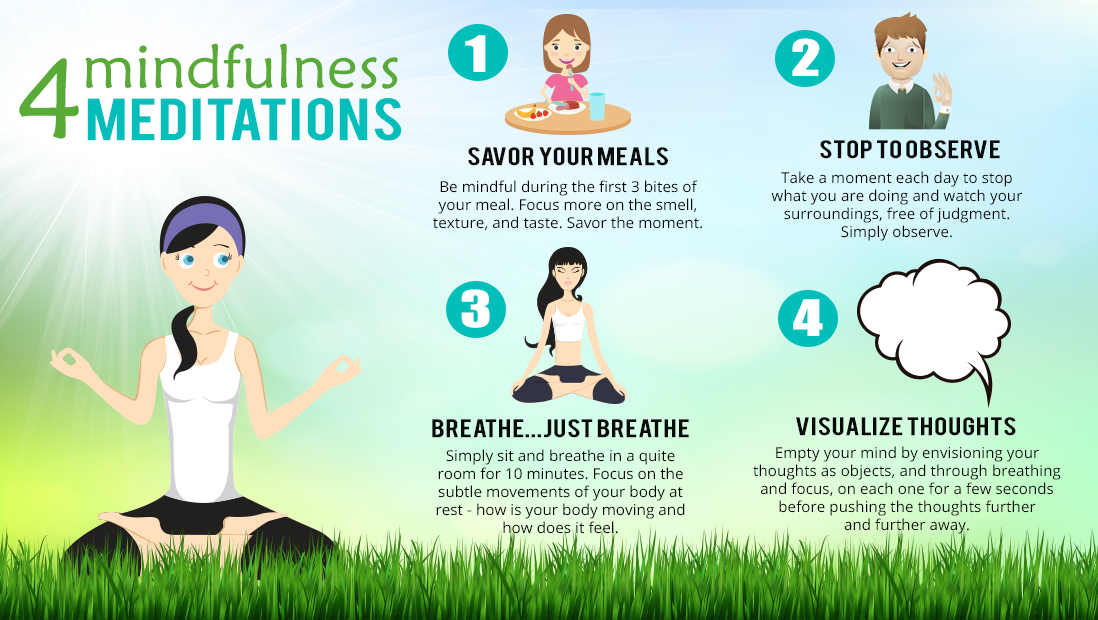 How to breathe correctly.
How to breathe correctly. Many people learn to breathe incorrectly (shallowly) in childhood. Meditation can help develop proper breathing skills. Deep breathing helps focus and relax, which teens, children, and even young adults may not be aware of and express in their own way.
2. How to deal with stress and anxiety.
Meditation helps to re-adjust the mind and calm the hectic thoughts and sharp, stressful emotions.
3. Better focus.
Mindfulness meditation, in particular, can be helpful in improving concentration. This is because staying in the present requires significant attention and awareness.
4. How to calm down and regulate difficult emotions.
Children often experience strong emotions and do not know how to calm down. Meditation helps center the mind and provides a soothing cushion for difficult emotions. If your child loves music, consider downloading a meditation that includes children's music.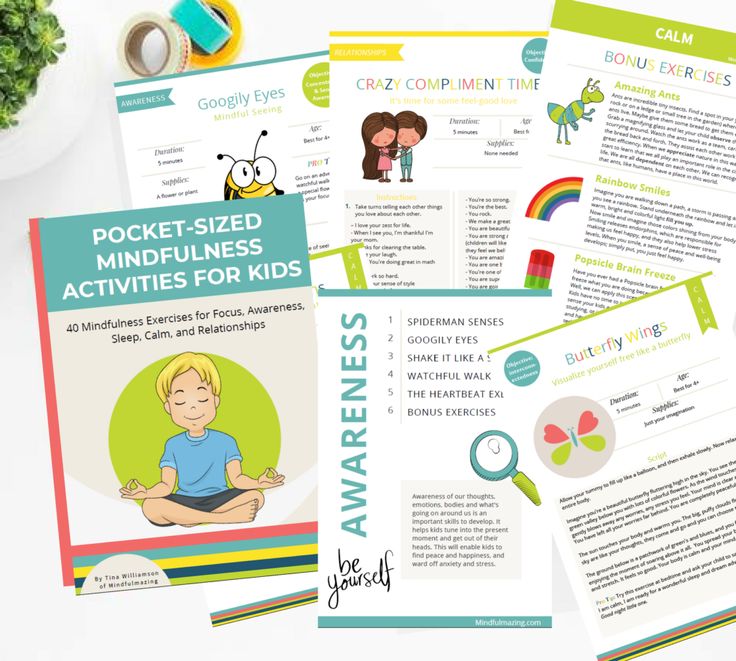 The audio recording can be turned on before bedtime or in the morning when the child is getting ready to start their day.
The audio recording can be turned on before bedtime or in the morning when the child is getting ready to start their day.
5. How to sleep better.
If you want to use bedtime meditation for kids, this is a great idea. Children's bedtime meditation can help alleviate some of the problems they face while resting. Many children feel too anxious, scared, or energetic to properly prepare for bed at night. Meditation before bed is a great remedy for a wandering mind.
Teaching children guided meditation is easier than you think
There is no wrong way to teach a child to meditate. But here are some tips:
1. Start small. Even five or ten minutes of meditation is better than no meditation at all. Before the start of the school day, sit in a quiet place (perhaps even in the car when you drive the children to school) and dedicate time to meditation practice.
2. Try family meditation. Meditation can be a wonderful experience for all family members, including children.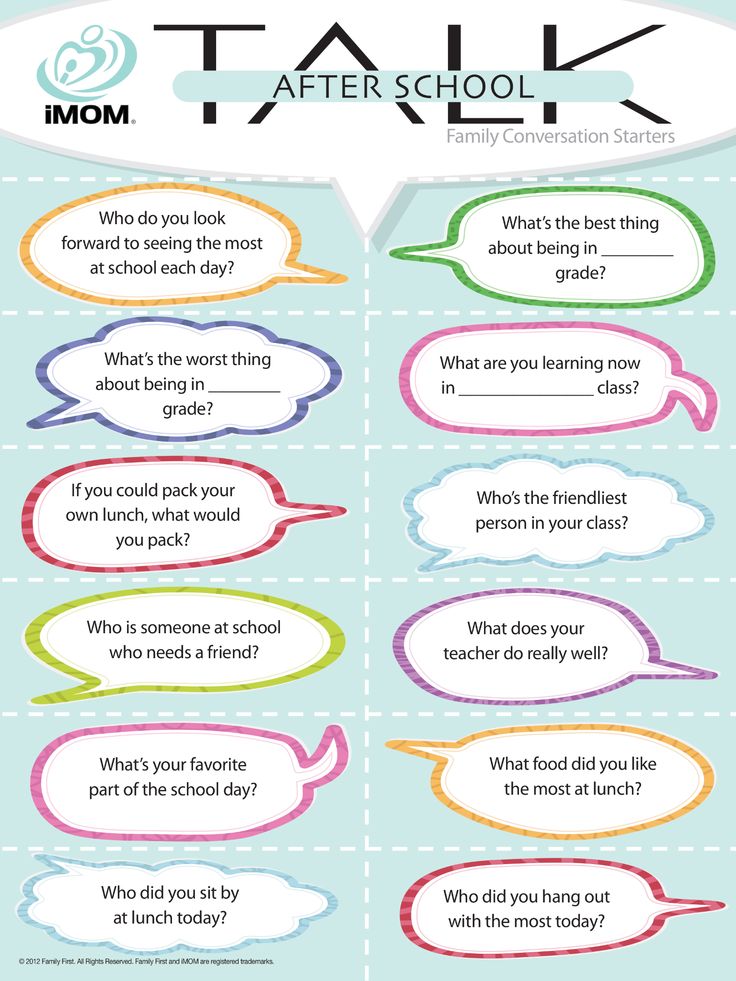 This is a great way to bond with your child and build more trust and intimacy.
This is a great way to bond with your child and build more trust and intimacy.
If you have never meditated before, ask an instructor for a quick initial session.
3. Don't worry about the details. It is natural for someone to giggle, move, or be distracted and restless in body and mind. This practice is primarily aimed at manifesting itself. They may also fall asleep.
Meditation for Children: Frequently Asked Questions
At what age should you start meditating?
You can start mindfulness meditation or short, informal meditation sessions with your children at any time. As a general rule, seated meditations are best for children six years of age and older.
How do you meditate as a family?
Here is a quick family meditation: Find a quiet place. Sit on the floor and assume a comfortable, mindful posture. Straighten your back and close your eyes slightly. Set a timer for two to five minutes. Focus on taking a deep breath: Inhale.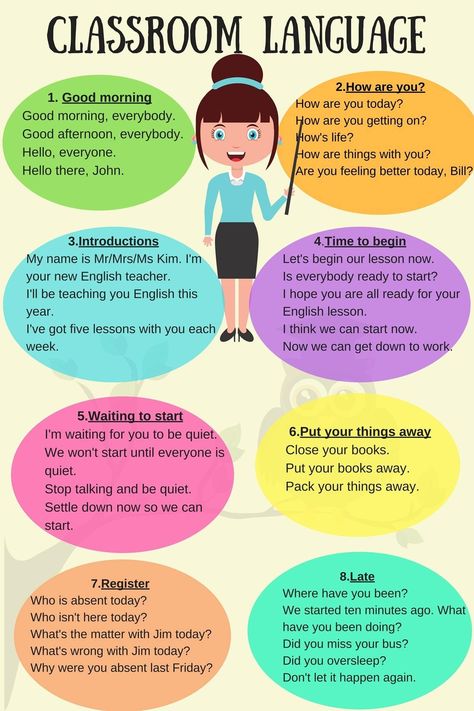 .. and exhale... Inhale... and exhale... Inhale... and exhale... until the timer runs out. Breathing exercises are the best way to introduce children to meditation - they give them the opportunity to focus and concentrate.
.. and exhale... Inhale... and exhale... Inhale... and exhale... until the timer runs out. Breathing exercises are the best way to introduce children to meditation - they give them the opportunity to focus and concentrate.
Does meditation help in studies?
Yes. Meditation has been proven to help children focus better and be less distracted. It helps to improve attention during classes and while studying. Meditation can also improve memory and provide mental and physical support to children as they learn. You can even teach your kids to meditate during their lunch break or before exams and tests at school.
Can babies meditate?
While you probably won't be able to get your little one to sit up during a full meditation, you can work on focus together. Try focusing on one object (like a ball) for 30 seconds. Look at it with your child and describe everything about it (color, shape, size, texture, smell...). This is a great mindfulness meditation for toddlers.